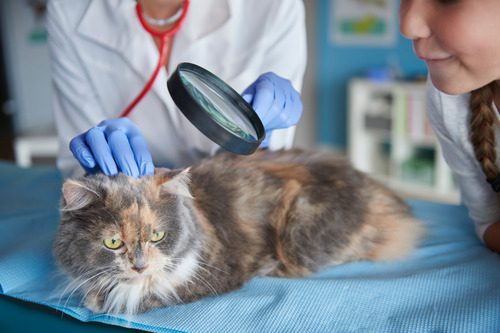Cat Allergy Rash: Signs and Treatment
If your cat has been scratching more than usual or developing red, irritated patches on their skin, there could be an underlying cause you haven’t considered. A cat allergy rash can show up in subtle ways at first, but it often turns into a frustrating and uncomfortable problem for both you and your cat. This blog takes a closer look at what a cat allergy rash actually is, why it happens, and how veterinary care can help bring relief. Whether you’ve seen the signs already or just want to be prepared, you’ll want to keep reading to understand what to watch for and what steps to take next.

What Is a Cat Allergy Rash?
A cat allergy rash develops when a cat’s immune system reacts to an allergen. This reaction triggers inflammation in the skin, leading to noticeable symptoms that can affect your cat’s comfort and appearance. Unlike occasional scratching, a cat allergy rash often leads to constant irritation and visible damage to the skin if left untreated.
How Allergies Affect a Cat’s Skin
When allergens come into contact with your cat’s body, their immune system may overreact. This overreaction causes the release of histamines, which lead to redness, swelling, and itchiness. Over time, repeated exposure to the allergen can worsen the symptoms, causing hair loss, scabbing, and even open sores.
Signs of a Cat Allergy Rash
Recognizing a cat allergy rash early helps prevent more serious complications. Pay close attention to any changes in your cat’s skin, coat, and behavior. Common symptoms to watch for include:
- Red or inflamed skin around the face, ears, belly, and paws
- Constant scratching, licking, or biting
- Scabs or sores from excessive scratching or licking
- Hair thinning or bald patches
- Thickened skin from ongoing inflammation
If you notice any of these signs, it’s time to call Dundee Veterinary Clinic at 734-529-2429 for an evaluation.
What Causes a Cat Allergy Rash?
Several factors can trigger a cat allergy rash. Identifying the cause is the first step in managing the condition effectively.
- Flea bites: Flea allergy dermatitis is one of the most common causes of cat allergy rash. Even a single flea bite can trigger a severe reaction.
- Environmental allergens: Pollen, mold, dust mites, and certain grasses can cause allergic reactions.
- Food allergies: Some cats are allergic to specific proteins or additives in their diet.
- Contact allergens: Materials like certain fabrics, cleaning products, or even certain types of litter can irritate the skin.
- Medications or vaccines: In rare cases, a cat may react to a medication or vaccine.
Each cat’s situation is unique, and finding the underlying cause often requires a combination of veterinary exams, diagnostic testing, and environmental changes.
Diagnosing a Cat Allergy Rash
A thorough veterinary examination is necessary to diagnose a cat allergy rash properly. Diagnosis involves ruling out other skin issues and pinpointing the underlying allergen.
What to Expect at the Vet
- Physical examination: Your veterinarian will check your cat’s skin closely for signs of allergies or infection.
- Medical history review: They may ask about your cat’s diet, environment, and any recent changes that could relate to their symptoms.
- Skin tests or allergy testing: Depending on the severity, allergy testing may be recommended.
- Elimination diets: In cases of suspected food allergies, your veterinarian may suggest a specialized diet trial to identify the problematic ingredient.
How a Cat Allergy Rash Is Treated
Once the underlying cause is determined, your veterinarian can recommend an effective treatment plan tailored to your cat’s needs. This may include:
- Flea control: If fleas are involved, aggressive flea prevention and treatment will be necessary for both your cat and the home environment.
- Medications: Antihistamines, corticosteroids, or immunosuppressive drugs may be prescribed to control inflammation and itching.
- Dietary management: Switching to a hypoallergenic diet may resolve symptoms if a food allergy is the culprit.
- Environmental management: Reducing exposure to dust, mold, and other allergens at home can help lessen flare-ups.
- Topical treatments: Medicated shampoos, sprays, or ointments can soothe irritated skin.
Managing Chronic Allergies in Cats
Some cats experience ongoing allergic reactions that require long-term management. Consistency and preventive care can significantly improve their quality of life.
Long-Term Care Strategies
- Routine veterinary visits: Regular check-ups allow your veterinarian to monitor your cat’s condition and adjust treatments as needed.
- Home care: Keeping your cat’s environment clean and using recommended flea preventives can minimize exposure to allergens.
- Special diets: In some cases, lifelong dietary adjustments are needed to manage food allergies.
- Medications: Some cats benefit from ongoing use of allergy medications or immunotherapy, depending on the type of allergy.
Managing a cat allergy rash often involves a combination of treatments and lifestyle changes, but many cats can lead happy, comfortable lives with the right care.
Why Professional Care Matters for Cat Allergy Rash
A cat allergy rash might seem like a minor problem at first, but untreated allergies can lead to severe infections, chronic discomfort, and behavioral changes in your cat. Working closely with a veterinary team helps protect your cat’s health and happiness. If you see signs of a cat allergy rash, call Dundee Veterinary Clinic at 734-529-2429 to schedule an appointment. Prompt evaluation and care can make all the difference for your cat’s well-being.
Recent Posts
About Us
At Dundee Veterinary Clinic, we cherish your pets as part of your family, and we value your role as their primary caregiver. Through honest communication, education, and support for your pet’s needs, our veterinarians aim to provide them with a lifetime of excellent care. We want to ensure that you and your companions get to spend many happy years together.
